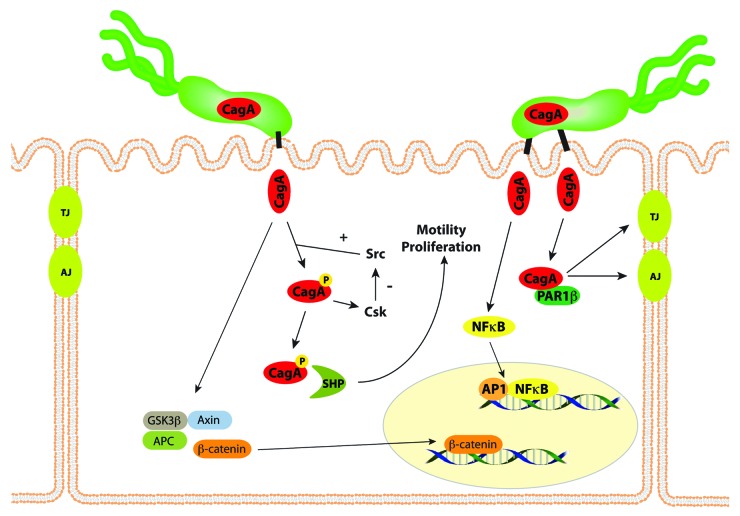Figure 1. CagA affects multiple signaling pathways within gastric epithelial cells. CagA is translocated into host epithelial cells by the cag type IV secretion system, and undergoes tyrosine phosphorylation by Src and Abl kinases. Phospho-CagA interacts with and activates several host cell proteins, including a host cellular phosphatase (SHP-2), leading to increased motility and proliferation. Non-phosphorylated CagA directly binds PAR1b, a central regulator of cell polarity, and inhibits its kinase activity, an interaction that promotes loss of cell polarity. CagA in an unphosphorylated form activates β-catenin, leading to transcriptional upregulation of genes implicated in cancer. The CagA protein of certain H. pylori strains also can induce NFκB activation. Thus, the entry of CagA into host cells activates multiple signaling pathways that may increase the risk for malignant transformation.

An official website of the United States government
Here's how you know
Official websites use .gov
A
.gov website belongs to an official
government organization in the United States.
Secure .gov websites use HTTPS
A lock (
) or https:// means you've safely
connected to the .gov website. Share sensitive
information only on official, secure websites.
